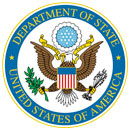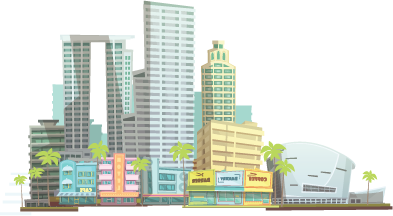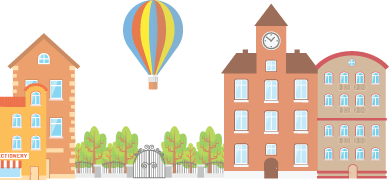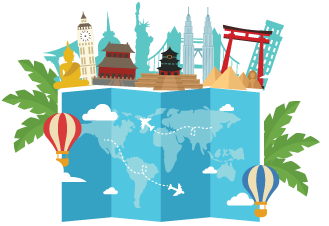-
Capital:
Valletta
-
Currency:
Euro
-
Time zone:
UTC+1 (Central European Time)
-
Driving side:
Left
-
Country calling code:
-
Language(s):
Maltese and English
Malta: An Overview
The island nation of Malta is a small archipelago in the Mediterranean tucked south of Sicily and north of the coast of North Africa. Its tree islands are Malta, Gozo, and Comino. Known historically as a summery Mediterranean destination for holiday goers seeking sun, blue water, and sand, Malta is actually so much more. There are important historic sites many of which have recently been lovingly restored. It’s 6,000-year history is powerful, and this is a destination for history buffs: the Hal Saflieni Hypogeum is a subterranean prehistoric burial site dating back to 4000 B.C. Of course, the beaches are gorgeous, the water is delightfully warm, and the dining scene is ever evolving. Popular resort areas include the northern shore of the island, Malta, city hotels in the capitol of Valletta, and quieter Gozo Island beach resorts. Malta has been a member of the European Union since 2004 and of the Schengen Agreement since 2007. Malta welcomes more than 2.5 million tourists each year.
Travel Documents
Your passport must be valid for at least three months beyond your planned date of departure from the Schengen area. You must have at least one blank page for stamps in your passport. If your stay is beyond 90 days, you will need a Travel Visa. If you are a citizen of and ETIAS-eligible country, you will need an approved ETIAS to travel to Malta beginning in 2021. Learn more about the application process and sign up for ETIAS alerts to get the latest news.

Malta : An Overview
Ta’ Qali National Park
Attard, ATD 4000
Phone: (356) 2561 4000
Web site: https://mt.usembassy.gov

Emergency Malta Telephone Numbers
| Police: |
112
|
|---|---|
| Ambulance: |
112
|
| Fire and Rescue: |
112
|
| European Union's universal emergency number: |
112 (112 is the equivalent to 911 in the US)
|
Where to Go
-

The City
The Island of Malta Baroque character defines Valletta, a small peninsula city elegantly jutting out between Grand Harbour and Marsamxett Harbour. City Gate leads visitors into the heart of the city where lovely contrasting architecture welcomes them. The Grand Master’s Palace, St John’s Cathedral and the Royal Opera House are perennial favorites. On the water, harbor cruises and ferry trips to nearby Sliema and Senglea are an idyllic way to see the sights. In Malta the cuisine is always ‘in season’ and local, sustainable and fresh. Night life is grown-up and fun, in Valletta’s old town a narrow alley, Strait Street, i filled with interesting and tasteful nightspots, is the place to go for food, drinks, music and fun.
-

Gozo Island
Gozo, beachy and wonderful, is a laid-back smaller island north of Malta. Diving and snorkeling in pristine waters surrounded by marine life promises magical memories. The Blue Hole, considered a top-ten Europe dive sites, is a cave without a roof carved out by thousands of years of waves and wind, sea life is resplendent. Sea kayaking and paddle boarding are popular thanks to the crystal blue water. Land adventures: hike, bike or climb Gozo’s cliffs, or for something unique, visitors can take an off-road Segway tour of the island. Xlendi on the southern shore is a postcard-perfect seaside village with an enchanting little beach, cool grottos to explore and al fresco dining overlooking the sea. For memorable accommodations, tourists looking for an authentic Gozo experience can rent petite villas called Farmhouses (think beamed ceilings, gourmet kitchens and private pools). The dining scene is delicious―literally, with local Maltese and Gozitan cuisine. Save room to sip some local limoncello. Saħħa!
-

Neighboring Countries
Malta is an island nation (archipelago) in the Mediterranean Sea, south of Sicily in Italy and north of Tunisia and Libya. It is bordered by the Ionian Sea and Greece to the northeast. Malta, Italy and Greece are members of the Schengen Area. These countries will be eligible for travel to travelers with an ETIAS visa waiver for entry beginning in January of 2021.
Travel Tips
ELECTRICAL OUTLETS AND ADAPTERS FOR US PRODUCTS
Malta uses G Plugs. You will need an adapter and maybe a transformer to use products made for the US electrical grid. Malta runs on a 230 (220) volts, 50 hertz AC current, while US runs on 120 (110) volts and a frequency of 60 Hz AC current. Many American products are able to run on 230 (220) volts, 50 hertz AC current. You need to check your electrical product to make sure it is labeled "dual voltage" before you plug it in, otherwise you may burn out the components rendering it useless. Learn more about the different European plugs and currents here.
PICKPOCKETS AND THEFT
Nearly all crimes suffered by tourists in Malta are nonviolent and avoidable, however you should be prepared for pickpockets. Europe’s transit systems are notorious for pickpockets.
- Being vigilant is your best friend when you are in high theft areas: train stations, trains, city buses, subways and open air shopping areas.
- Store important documents, money and phones in zippered or buttoned pockets, specialized travel day bags or a money belt.
- You should never leave your bags unattended! Make sure you can see them at all times. Better yet, you should keep in physical contact with your bags in public places.
MOBILE PHONES
First, be sure to check that your phone will work in Malta. The easiest way to find out is to check with your mobile phone service provider. You can also find out if your service provider offers international plans for Malta. We recommend signing up for an international plan if you plan on using your smart phone to connect to the internet or use the travel apps you may have installed on your phone. If you decide not to sign up for an international calling and data plan, costs can add up very quickly!
Free WI-FI can be easy to access, but can be very slow or not available in the countryside. Sign up for a Virtual Private Network (VPN) services to secure your phone, tablet or computer when using public Wi-Fi networks. This prevents hackers from accessing your device when using free Wi-Fi.
EUROPEAN TAXIS, BUSES AND SUBWAYS
• Taxis - A good rule of thumb is use a prominent taxi service, one that has a company logo and a telephone number on the car. Avoid using taxis that just have a taxi light on the top of the car. Make sure the taxi driver is using the correct rate for the time of the day and day of the week. Nighttime and weekends have higher rates. When taking a taxi that has a set fare, for example to a Malta airport, make sure you establish the price before you leave.
• Buses and subways - Most European cities have a great public transportation system. The cost of a transit pass for the entire time of your stay can equal the cost of one or two taxi rides. Check out the ticket options that are offered at subway stations, bus terminals and train stations. Get a transit map or download a transit app to your smart phone. Google maps have transit maps for most Malta cities.
EXCHANGING CURRENCY IN MALTA
The most important thing you should understand is how exchange rates work. The Euro usually has a higher exchange rate compared to the US dollar. So if you want to get 100 euros and the exchange rate is $1.10 for one euro, it will cost you 110 dollars to get 100 euros. There are many currency conversion apps you can down load to your smart phone to get up-to-date exchange rates.
Many people like to get Euros through their bank before they leave for their trip. Check out what fees the bank charges for this service. Different banks have different fees. These fees can be expensive, so it pays to shop around.
When in Malta avoid using currency exchange companies or booths. These companies can charge up to 15% to 20% of the amount you are exchanging. Malta banks can also charge high fees to exchange money. You best bet is to use your ATM card with an established bank to get local currency.
DEBIT CARDS AND ATMS
First, make sure that your ATM card can be used internationally. Second, see what your bank charges for international ATM fees. Third, see what is the maximum amount you can withdraw each day. While there are fees associated with using an ATM card, they are usually much less than the fees charged by Malta banks and currency exchange companies. ATM fees are a flat fee not a percentage. So when you are withdrawing money using your ATM card, take out the maximum amount to reduce amount of ATM fees you will incur. Also it is a good idea to use bank ATMs instead of third party ATMs, which can charge higher fees.
CASH VS CREDIT CARDS
Using local cash is key for the European tourist. Some businesses do not accept credit cards and many businesses charge a higher price when using a credit card due to the credit card fee they pay to the credit card company. Many businesses will take US dollars, but then you will need to figure out the exchange rate to ensure you are being charged the correct amount and receiving the correct change. Having smaller bills is better than large bills. Also remember to keep your cash secure in pickpocket proof pockets or a money belt.
US credit cards are widely accepted across Malta. Just in case, check with bank to be sure your credit card will work in Malta. Before you leave on your trip, sign up for a credit card that has no foreign transaction fees. If you don’t, you may be in for a surprise when you get your credit card statement that contains lots of foreign transactions and currency conversion fees.
It makes sense to use a credit card for hotels, car rentals, Eurail pass, upscale businesses and restaurants. Limit the number of credit cards you take with you. Bring one back up credit card in addition to the main card you intend to use. Be sure to contact your credit card company and let them know the dates you will be traveling abroad.
TIPPING IN MALTA
Generally speaking, if someone in the service industry provides great service for you, a tip of a couple of euros is acceptable, but not required.
- Restaurants - 5% to 10%, with 10% being for over the top service. Be sure to check to see if service has already been included in the bill
- Taxis - round up to the nearest Euro, for example, if the fare is 5 euro give them 6
- Hotel porters - one euro for every bag
Medical Information
Here’s the good news: most of Europe, including Malta, has a universal health care system that takes care of everyone – including foreigners. If you need healthcare due to illness or injury while traveling in Malta, you won’t have to worry about getting treated. There will be out-of-pocket costs, but those are generally reimbursable depending on your health insurance.
IMPORTANT HEALTHCARE HINTS
- Pack enough of any prescription medications for the length of your stay, in their labeled, original containers. It is smart to add a few more pills than you need, just in case you stay longer.
- Bring a small first aid kit with over-the-counter necessities.
- In an emergency call 112, that’s the “911” in Europe.
- If you have a non-emergency health issue, go to the nearest pharmacy first. Malta pharmacists can actually diagnose and prescribe medications for minor issues like sore throats, sinus and stomach issues and minor aches and pains.
- If the pharmacist can’t help you, go to a clinic. They’re much like our stateside urgent care clinics, and providers can order any tests you might need like x-rays.
- Ask for a House Call. Your hotel will most likely be able to have a physician come to your room if need be.
- Most embassies and consulates have lists of physicians and hospitals in major cities. Go on the U.S. Embassy’s site, choose your destination and look under U.S. Citizens Services section.

